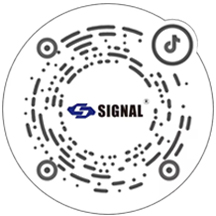
Electromagnetic interference (EMI) poses significant challenges in the design and operation of electronic systems. To mitigate these challenges, shielding is employed to protect devices from unwanted electromagnetic radiation that can disrupt functionality.
Understanding Electromagnetic Interference (EMI):
EMI arises when electromagnetic radiation from various sources—such as radio waves, microwaves, and X-rays—interacts with electronic devices. This interference can degrade signal integrity, leading to data errors, reduced performance, or complete system failure. Given that nearly all electrical equipment emits some level of electromagnetic radiation during operation, managing EMI is crucial across numerous applications.
The Role of Shielding:
Shielding involves encasing electronic components or cables in a conductive material to block or attenuate electromagnetic radiation. This protective barrier serves two primary purposes:
1. Preventing External EMI Intrusion: By blocking external electromagnetic fields, shielding ensures that sensitive electronics operate without disruption from surrounding devices or environmental sources.
2. Containing Internal Emissions: Shielding also prevents the device's own electromagnetic emissions from interfering with nearby electronics, maintaining compliance with regulatory standards on electromagnetic compatibility (EMC).
Implementation in Cables and Connectors:
In cabling, shielding typically consists of a braided sleeve or foil layer beneath the outer insulation. For effective performance, this shield must be properly grounded to safely divert unwanted signals. Connectors play a critical role in maintaining the integrity of the shielded system. Utilizing connectors with conductive shells, such as those made from stainless steel, ensures continuous shielding across connections, providing both mechanical strength and electrical continuity.
Industry Applications:
Effective shielding is vital in various sectors, including:
· Telecommunications: Ensuring clear signal transmission by minimizing EMI from numerous electronic devices.
· Medical Equipment: Protecting sensitive diagnostic instruments from external electromagnetic fields to maintain accuracy.
· Automotive: Preventing EMI from affecting vehicle control systems and in-car entertainment.
· Aerospace and Defense: Safeguarding avionics and communication systems from both external and internal electromagnetic disturbances.
For tailored solutions that address your specific shielding requirements, Shenzhen SIGNAL offers a comprehensive range of connectors and components designed to enhance electromagnetic compatibility and ensure reliable performance in diverse applications.






